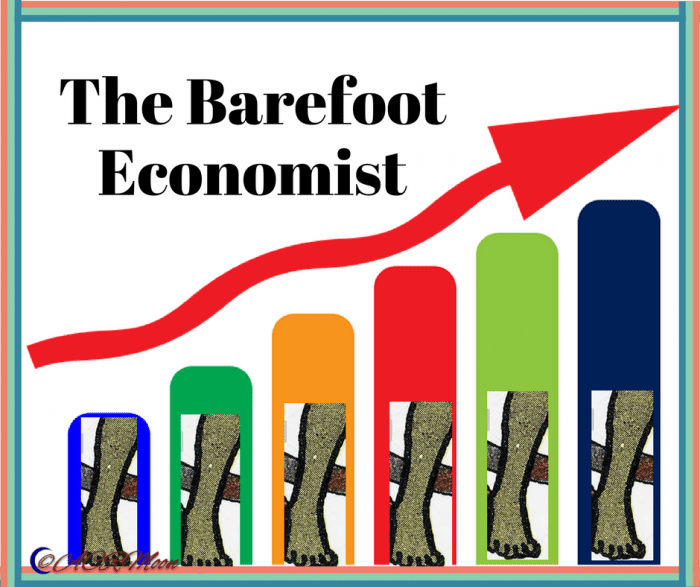There are various metrics to measure the value of a stock market. The most common or popular is Earning per share, or EPS, for short. That one metric gives a bird’s eye view of the performance of stock markets, as well as individual stocks, informs Tarun, in the weekly column, exclusively for Different Truths.
Writing on stock markets is always tricky. The stock markets are not fully mainstream, and there are people who love them, are faintly interested in them, are indifferent to them, or plainly hate them. So, the readers would have so many varied reactions to the write-up. Still, write if I must, I must make it different from the otherwise technical, or fundamental sections that are so often carried out in economic pages of the newspapers.
Also, there are certain respectable courses for stock markets, being taught in professional studies. So, the scrutiny for such an article is quite high.
 I still wanted to write, because, there is an important question of the value of a stock market. There is no one universal view of the value benchmark of the stock markets. Hence, I thought, I could write something of value regarding value.
I still wanted to write, because, there is an important question of the value of a stock market. There is no one universal view of the value benchmark of the stock markets. Hence, I thought, I could write something of value regarding value.
There are various metrics to measure the value of a stock market. The most common or popular is Earning per share, or EPS, for short. That one metric gives a bird’s eye view of the performance of stock markets, as well as individual stocks. The current EPS for Nifty is 390.
The PE ratio, or the Price to EPS ratio, is one metric which tells how cheap or expensive the stock is. For example, as I write this, the PE of Nifty is 27.28. That means, to earn one rupee in nifty, one has to invest 27.28 rupees. In other terms, the investment in stock markets, going by the current rate, would yield a return of less than 4%.
There are other metrics also, like PEG, market capitalisation to GDP (favourite of Warren Buffet), capital structure substitution, return on assets, return on capital employed, EBITDA, enterprise value, fair value method, price to book value etc. Interested readers can search Investopedia for information on the same.
The one common thread in all the above methods is, that they use historical data, and try to assume continuity, and find the best investment models based on that data. However, markets are dynamic, and would never behave in the same manner over a long period. So, we can’t know whether the markets are really overvalued or undervalued, using just these methods alone. For example, the average PE for Nifty is 19.20. So, it is overvalued above that figure. But who would invest below 19.20, because the sentiment is so weak at that time? And in any case, major gains accrued to Nifty above 19.20, so we can’t quit equity above 19.20 PE!
Now consider the cost of capital. In India, taking a loan from banks would cost us around 10% interest.  Suppose one was to take a loan from banks and invest in stock markets, for about 4% return, he would be losing 6%! Or if one were to invest in bank FD at 6%, one would still earn a higher return than stock markets!
Suppose one was to take a loan from banks and invest in stock markets, for about 4% return, he would be losing 6%! Or if one were to invest in bank FD at 6%, one would still earn a higher return than stock markets!
Look at the USA stock market. The Standard & Poor trades at a PE of 26%, but there, the fixed deposits fetch less than 2% annually. So, all other things remaining the same, the investment in S&P is more attractive for US citizens, even at nearly same PE.
As we can see, the cost of capital should be considered before declaring whether one thing is overvalued or undervalued.
There is another thing-growth. India is among the highest growing economies of the world. Future earnings per share depend upon an economy’s growth potential. In India, the gross capital formation is 30% of GDP, whereas, in the USA, the same is 20%. That means that India has to spend more just to increase her productive capacities. So, India would naturally require a higher GDP than the USA, to maintain her standard of living. This may be because of a growing young population, or poorer technology, resulting in higher depreciation rates.
There are certain other concepts like the product life cycle concept, adoption of advanced technology, the productivity of labour, enabling laws etc, which make for the growth of the economy. Then the strength of the brand, the dynamism of the management, the market conditions, that make for the strength of the company.
Let me touch upon a very important aspect of stock markets. This is not strictly related to valuation, but it affects the price of stock markets equally significantly. I am talking about liquidity. Liquidity here implies the investible funds in the market. The central banks create liquidity, the banks distribute that liquidity, and fund managers and business owners invest that liquidity. In the aftermath of 2008 crisis, massive and unprecedented amounts of liquidity were created. That liquidity is beginning to find a home in various asset classes. The first one was equity. Now, we are seeing that same liquidity pile in natural assets like base metals, crude oil, gold, and silver.
 How to judge liquidity? There are various technical methods, using technical indicators to judge liquidity flows in and out of various assets. The two methods that are more renowned among professional investors are Elliott wave system and Gann charts. These are considered tricky, but they have the potential to be deadly right in predicting liquidity patterns. Still, they are considered dubious by many, although, personally, I have found them useful guides to risk management that is so important in the world of professional investing. There is one universal saying about liquidity-“it is a tide that lifts all boats.”
How to judge liquidity? There are various technical methods, using technical indicators to judge liquidity flows in and out of various assets. The two methods that are more renowned among professional investors are Elliott wave system and Gann charts. These are considered tricky, but they have the potential to be deadly right in predicting liquidity patterns. Still, they are considered dubious by many, although, personally, I have found them useful guides to risk management that is so important in the world of professional investing. There is one universal saying about liquidity-“it is a tide that lifts all boats.”
We can see that value of stock markets, and companies therein, are all relative. It is always a comparison to see whether the investments are wise or not. We can either be completely naïve about stock markets like Lusha, the Chimpanzee which outperformed 94% Russian fund managers with her experimental portfolio, or we can consider so many different metrics to arrive at a considered investment decision, and be hailed like the Warren Buffets or Rakesh Jhunjhunwalas of the world.
©Tarun Gupta
Photos from the Internet
#StockMarket #IndianStockMarket #Overvalued #MoneyMatters #MoneyInTheMarket #GDP #USAStockMarket #EPS #BarefootEconomist #DifferentTruths






 By
By

